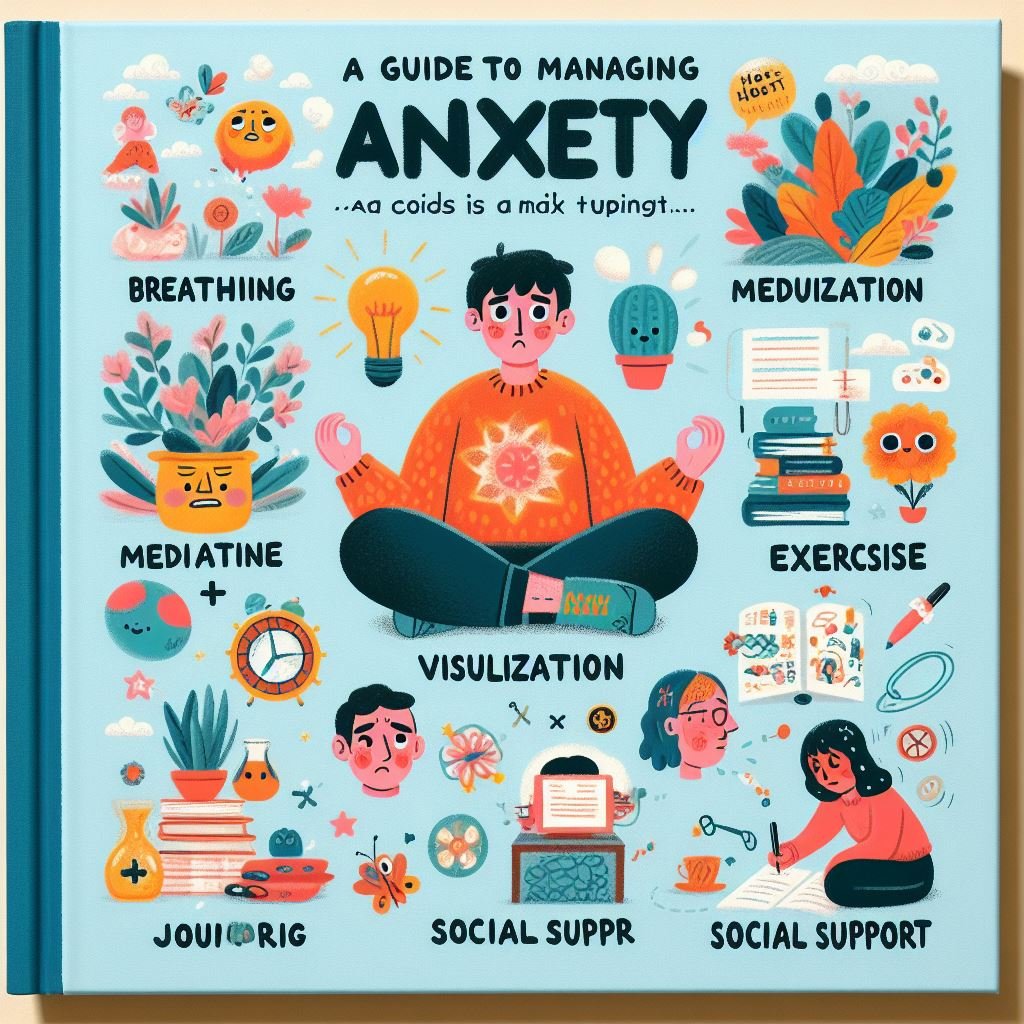Can Diabetes be Cured or Reversed?
Let’s go on an exploration to see if we can make diabetes better or maybe even fix it. In the past, we thought diabetes would stick around forever, but now, smart scientists are exploring new ideas. Back in 1999, Dr. Jira Evergreen had a big idea about insulin, and since then, many scientists worldwide are studying if we can make diabetes go away. It’s like they’re on a mission to find out if we can fix it or even make it disappear. Even though we’re not sure yet, this gives us hope that in the future, we might have new ways to deal with diabetes, maybe even making it better or going away completely. So, let’s explore this exciting possibility together!

Can Diabetes Truly Be Eliminated?
In recent times, scientists have found new and exciting information about diabetes. Some people used to think that diabetes could never be fixed, but now many smart people are looking into it.
Today, we’re asking a big question: Can we not only control diabetes but also make it go away completely? Let’s explore the cool journey of discovery that started in 1999 when Dr. Evergreen shared ideas about insulin resistance.
Understanding the Basics:
Diabetes is when your blood sugar is too high, and some people feel like it’s a struggle for life. It involves proteins, carbohydrates, and insulin in a big story. Carbs, found in food, turn into sugar inside our bodies. This sugar goes from the stomach to the blood and then into cells. But, it needs help, and that’s where insulin comes in. It’s like a special delivery person helping sugar go from the blood into the cells, just like the ‘F-35’ process we talked about before.
The Journey Within:
Let’s look closer at how our bodies work. When we’re born, our bodies have insulin machines given by nature. These machines help install another machine called ‘S.’ Imagine a child born near mountains and rivers going on a journey from above and entering a pretend shop. This is where the sugar transportation adventure begins.
Balancing Act:
As the child grows up and eats different foods, the amount of carbs they eat affects their blood sugar levels. When they eat more carbs, the insulin levels in their blood go up too. The body does a dance to make sure the sugar goes into the cells. But, there’s only so much room in the cells, and if there’s too much sugar, it causes problems. It’s like a tricky balance the body has to figure out.

Lets explore the intricate world of Diabetes Phenomena
We want to make scientific stuff easy to understand. In our last talk, we figured out how diabetes works. If you haven’t checked that out yet, we suggest you do because today’s talk is all tied up with it. Don’t worry if you’re new here – we’ll make sure you get what we’re talking about. Let’s quickly go over what we talked about before.
The Three Pillars of Nutrition:
Talking about food, there are three important things: protein, carbs, and how carbs move around inside us. Today, we’re going deeper into the cool science of diabetes.
Understanding Diabetes:
Last time, we talked about how diabetes starts in our bodies. Insulin, proteins, and carbs play a big role in making our blood sugar go up and down. Today, we’re building on that, adding more to what we know.
Connecting the Dots:
If you just started with us, don’t worry – we’re keeping things smooth. We’re continuing our talk about managing diabetes. As we chat today, we’re making sure the science is simple for everyone.
The Basics: Protein, Carbs, and More:
To get why managing diabetes is tricky, we need to go back to basics. The food we eat has two important things – protein and carbs. Today, we’re focusing on how carbs move inside us, showing the cool dance between insulin, blood sugar, and what cells do.
In the intricate dance of sugar within the body, it undergoes a conversion process. The sugar, which is deep within the stomach, automatically travels into the bloodstream. However, it doesn’t transfer automatically into the cells from the blood; it requires a carrier. When insulin is injected, its role is to lift the sugar load from the blood and insert it into the cells.
Diabetes Mellitus (DM) is a long-term health condition where the level of sugar in your blood stays high. There are two main types: Type 1 and Type 2.
In Type 1 Diabetes, the body doesn’t make insulin at all, and the only treatment is using insulin for life. In Type 2 Diabetes, the body struggles to use insulin properly, and the pancreas tries hard to make more insulin. But with time, the pancreas gets tired, and the insulin it makes isn’t enough, leading to high blood sugar. Some people with Type 2 Diabetes have both problems – trouble using insulin and not enough insulin production.
When the body starts resisting insulin, the pancreas tries to fix it by making more insulin. This helps control blood sugar for a bit, like a honeymoon period. But as time goes on, the pancreas gets tired, and it can’t make enough insulin. This leads to high blood sugar. Some people have both problems – their body resists insulin, and their pancreas doesn’t make enough insulin.
The Question: Can Diabetes Be Cured or Reversed?
Even though there’s no complete cure for type 2 diabetes, some people can make it better. If you change what you eat and lose weight, you might keep your blood sugar levels normal without taking medicine.
But keep in mind, this doesn’t mean diabetes is gone forever. It sticks around. Even if you stop taking medicine and your blood sugar stays good, the problems could come back. However, some folks can go many years without any issues controlling their sugar and dealing with diabetes-related worries.
However, so far till the time I am writing this post, there’s no sure way to cure Type 1 diabetes, except for getting a new pancreas or special cells from the pancreas. But there aren’t enough of these for everyone, and many people in the world have diabetes.
But guess what? There’s good news from a special test. The first person in the test, a 64-year-old who had diabetes for almost 50 years, used to have big problems with low blood sugar. After getting special cells that act like insulin, his blood sugar went back to normal—even after eating!
If this person keeps doing well with the treatment, it could be the first time we really cure diabetes. It’s super exciting, but it’s still really early. There are 16 more people in the test, and we’ll have to wait five more years to know if this can help others too.
So, how do you make diabetes better? The main thing seems to be losing weight. Not only does losing weight help you manage diabetes, but for some people, losing enough weight might make them diabetes-free, especially if they’ve only had it for a few years and haven’t needed insulin.
How to Manage Diabetes Effectively and Lead a Normal Life?

Maintaining the right blood sugar levels is crucial when you have diabetes, and various factors can influence them. Here are some things you can do to manage these factors:
Maintaining Healthy Food Habits:
Healthy eating is essential for everyone, but it’s especially important for people with diabetes. Understand how different foods affect your blood sugar:
Balanced Meals:
Learn to plan balanced meals by considering what and how much you eat. Two common methods are carbohydrate counting and the plate method. Consult your healthcare professional or a dietitian to determine the right approach for you.
Carbohydrate Counting:
Keep track of the grams of carbohydrates you consume each day. This is crucial if you take insulin, as it helps you adjust your insulin dose accordingly.
Types of Carbs:
Be mindful of the impact of carbohydrates on blood sugar. Opt for nutritious options like fruits, vegetables, and whole grains, which also contain fiber to stabilize blood sugar. Limit refined and processed carbs like white bread, sugary cereals, cakes, cookies, candy, and chips.
The Plate Method:
Simplify meal planning with the plate method. Use a 9-inch plate, fill half with nonstarchy vegetables, a quarter with lean protein, and the other quarter with healthy carbohydrates like fruits and whole grains.
The Size of Portion:
Learn appropriate portion sizes for each food type. Everyday objects, such as a deck of cards for meat or poultry, can serve as helpful references.
Balancing Medication and the Meals of the day:
Coordinate your meals and medicines, especially if you take diabetes medication. Balance is crucial to avoid hypoglycemia (low blood sugar) or hyperglycemia (high blood sugar).
Avoid Sugary Drinks:
Cut back on sugar-sweetened drinks, as they are high in calories, low in nutrition, and cause rapid blood sugar spikes. Reserve them for treating low blood sugar levels.
Remember, these steps can help you manage your blood sugar levels effectively. If you have diabetes, always consult with your healthcare team for personalized guidance.
Turn to Regular Moderate Exercise:
Indulging in physical exercise is super important, especially if you have diabetes with prior consultation from your doctor. It helps with weight control, lowers blood pressure, and makes your body stronger. For people with diabetes, exercise is like a superhero—it lowers sugar levels in the blood and helps insulin work better.
Here are some cool things about exercise for people with diabetes:
- You don’t have to lose weight to see benefits. Even if you don’t drop pounds, exercise can still make your blood sugar better.
- Any kind of exercise is good—whether it’s walking, lifting weights, or doing a mix of both.
- If you’re older and not used to moving around much, doing exercises to make your muscles stronger and some aerobic activities (like walking) can help a lot.
- If you walk at least two hours each week, it can lower your chances of heart disease. And if you exercise even more, like three to four hours a week, it’s even better.
- For women with diabetes, spending four hours a week doing exercises (moderate or intense) lowers the risk of heart disease by 40%.
When is the best time to exercise? Usually, it’s one to three hours after you eat. Check your blood sugar before exercising, especially if you use insulin. If it’s less than 100 mg/dL, eat a little snack to avoid low blood sugar.
Also, check your blood sugar after tough workouts. If you use insulin, the risk of low blood sugar is highest six to 12 hours after exercising. So, keep an eye on it!
Remember, exercise is like a buddy for people with diabetes—it helps a lot, and it’s pretty awesome!
The Conclusion
In the end, we ask the big question: Can diabetes be cured? Right now, there’s no magic cure for diabetes, especially Type 1. But the good news is, for Type 2 diabetes, people can make it much better. By eating healthy, exercising, and taking medicines if needed, many people can control their blood sugar levels really well. That’s like being the boss of your diabetes!
Remember, managing diabetes is all about teamwork. Your healthcare team, including doctors and dietitians, can help you figure out the best plan. Eating good food, being active, and taking medicines as directed are key players in this team. It’s not just about today but making choices that help you stay healthy in the long run.
So, while there might not be a cure that makes diabetes disappear completely, there are super-strong ways to manage it effectively. It’s like having a superhero team on your side, helping you live your best, healthiest life. Stay positive, stay active, and keep making those healthy choices—because you’re the one in charge, and you’ve got this!
To all my diabetes warrior, amazing things are being done every day to take charge of health. Remember, managing diabetes is a journey, not a race.
Every small victory, like making a healthy food choice or going for a walk, is something to celebrate. Your efforts count, and a positive difference is being made in your life.
The journey is being embraced with courage and resilience. You’re not alone—cheers are being heard from your healthcare team and a community of supporters. Every step taken is a step toward a healthier, happier you. Keep shining bright, and never forget: the power to conquer anything is within you!
FAQs
What is diabetes, and how does it affect the body?
Diabetes is a metabolic condition characterized by elevated blood sugar levels. It involves a complex interplay of proteins, carbohydrates, and insulin in the body, where insulin helps transfer sugar from the blood into cells.
Can diabetes truly be eliminated or cured?
While there is no complete cure for Type 1 diabetes, recent research shows promising possibilities for Type 2 diabetes. Lifestyle changes, including healthy eating, exercise, and weight loss, can significantly improve blood sugar levels and, in some cases, even make diabetes go into remission.
How does diabetes start in the body, and what role does insulin play?
Diabetes involves the body’s struggle to regulate blood sugar levels. Insulin, a hormone, acts as a special delivery person, helping sugar move from the blood into cells. In Type 1 diabetes, the body doesn’t produce insulin, while in Type 2 diabetes, the body struggles to use insulin effectively.
What are the different types of diabetes, and how do they differ?
There are two main types of diabetes: Type 1 and Type 2. Type 1 diabetes results from the body’s inability to produce insulin, requiring lifelong insulin therapy. Type 2 diabetes involves insulin resistance, where the body can’t use insulin properly, and may be managed through lifestyle changes, including diet and exercise.
How does the body respond to insulin resistance in Type 2 diabetes?
When the body becomes resistant to insulin, the pancreas increases insulin production to control blood sugar temporarily. This results in a “honeymoon period,” but over time, the pancreas may tire, leading to insufficient insulin production and high blood sugar.
What are the ongoing scientific developments regarding a potential cure for diabetes?
Recent research has shown promising results, particularly in Type 2 diabetes. Special cells that act like insulin have been used in tests, and in some cases, individuals experienced a return to normal blood sugar levels, even after many years of diabetes. Further studies are needed to determine the broader applicability of these findings.
Can weight loss and lifestyle changes make diabetes better or even reverse it?
Yes, for some people with Type 2 diabetes, lifestyle changes, including healthy eating, exercise, and weight loss, can significantly improve blood sugar levels. In some cases, individuals may achieve remission, meaning their blood sugar levels stay normal without medication. However, it doesn’t guarantee that diabetes is permanently gone.
What role does exercise play in managing diabetes?
Exercise is crucial for managing diabetes. It helps with weight control, lowers blood pressure, and makes the body stronger. Exercise lowers blood sugar levels and enhances insulin sensitivity. Even without significant weight loss, exercise can improve blood sugar levels.
What are some practical tips for managing diabetes effectively?
Maintain healthy eating habits, including balanced meals and portion control. Be mindful of carbohydrate intake and focus on nutritious options. Coordinate meals and medications for a balanced approach. Avoid sugary drinks and engage in regular moderate exercise, making sure to check blood sugar levels before and after.
Is there a specific time that is best for exercise for people with diabetes?
One to three hours after eating is generally considered an optimal time for exercise. Checking blood sugar levels before exercising, especially for those using insulin, is essential. If blood sugar is less than 100 mg/dL, a small snack is advisable to prevent low blood sugar. Monitoring blood sugar after intense workouts is crucial, as the risk of low blood sugar is highest six to 12 hours post-exercise.
Is there a magic cure for diabetes, especially Type 1?
As of now, there is no magic cure for Type 1 diabetes. However, ongoing research and tests, such as using special cells in individuals with long-standing diabetes, show promising early results. It’s an exciting area of exploration, but more time and research are needed to draw conclusive findings.
Can diabetes be cured or is it a lifelong journey?
While there might not be a cure that makes diabetes disappear completely, there are strong ways to manage it effectively. For Type 2 diabetes, lifestyle changes can make it much better, and some people can control their blood sugar levels without medication. It’s about being the boss of your diabetes and making choices that contribute to long-term health.
You may also be interested to read about the following topics:



Pingback: Ayurvedic Guide: Holistic Diabetes Management | HuntEnder.com
Pingback: Exercise and Diabetes Management - Hunt Ender - We Aim To End Your Search
Pingback: Understanding Type 2 Diabetes: A Comprehensive Guide - Hunt Ender - We Aim To End Your Search
Pingback: Comprehensive Guide to Type 2 Diabetes: Causes, Prevention & Management
Pingback: Prevent Diabetes: 10 Easy Steps to Healthy Lifestyle
Pingback: Youth Type 2 Diabetes: Unravelling the Links with Root Cause Analysis
Pingback: Diabetic Chappal - Hunt Ender - We Aim To End Your Search